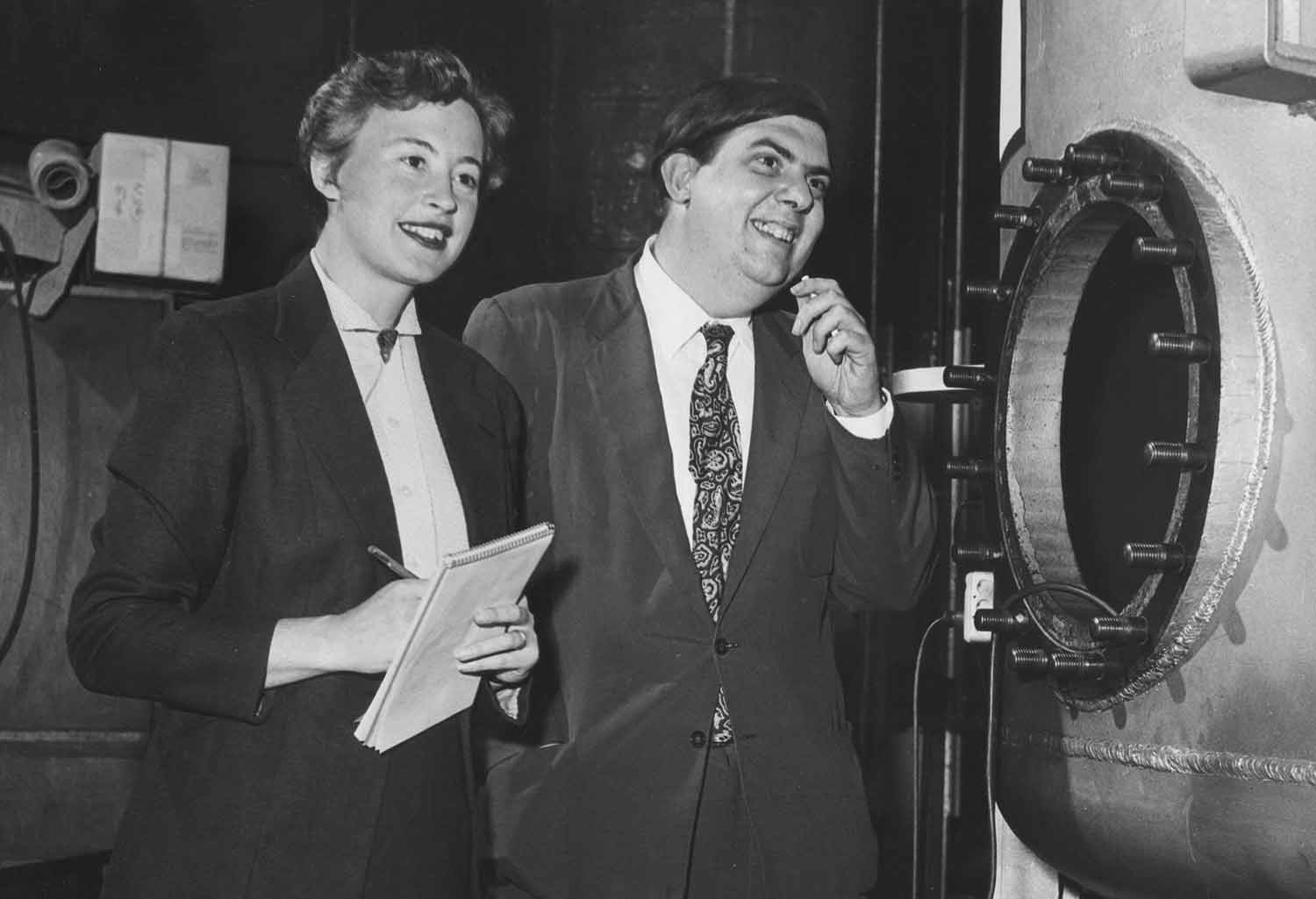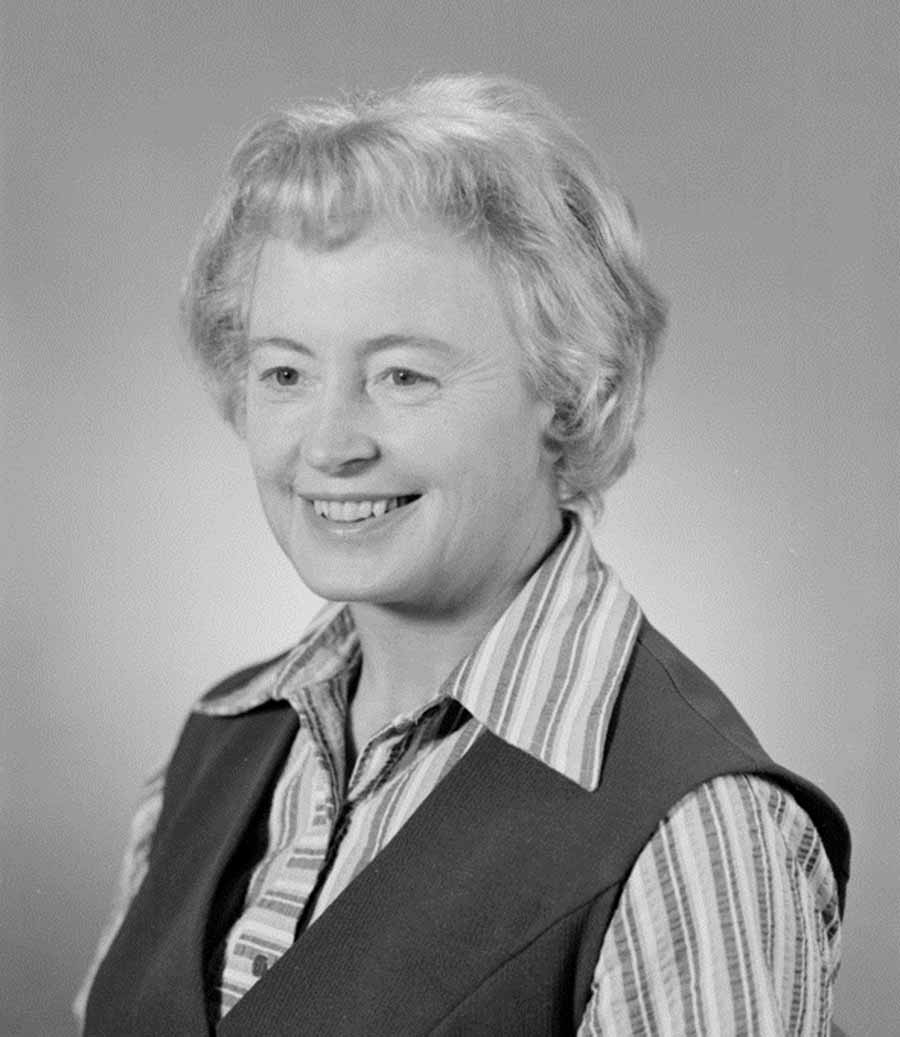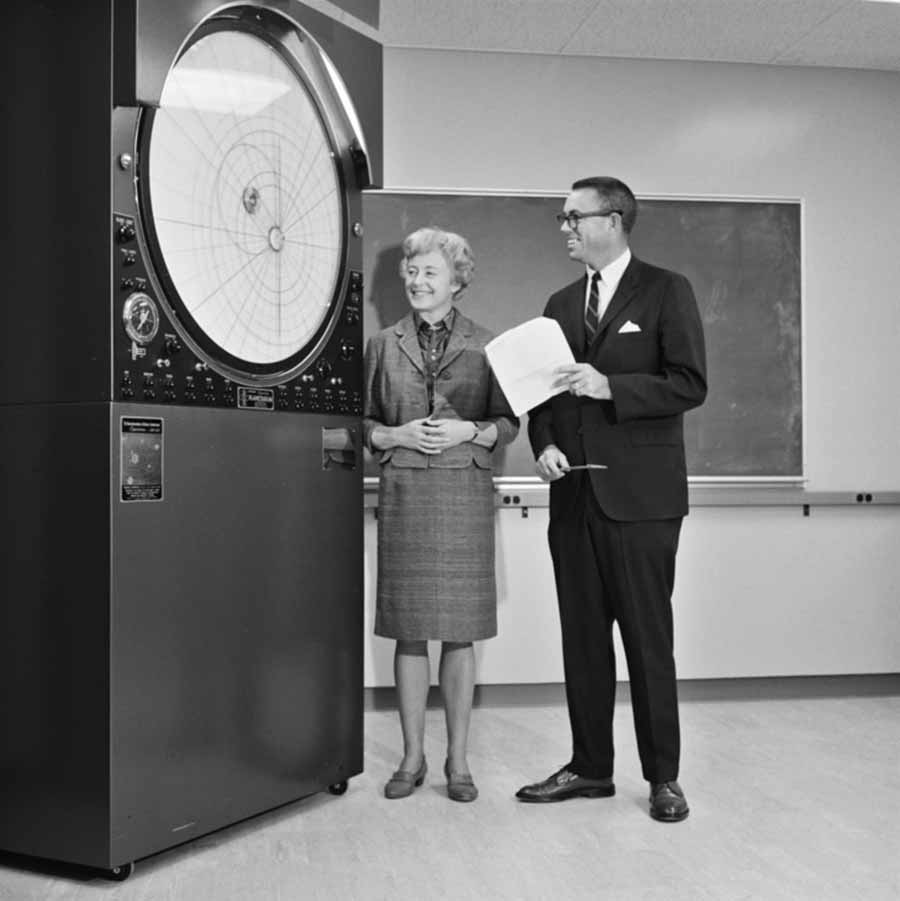
By:
- Cynthia Dillon
Published Date
By:
- Cynthia Dillon
Share This:

Margaret and Geoffrey Burbidge in 1956 at Caltech. Image courtesy of Caltech Archives
Physics Pioneer Margaret Burbidge Dies at 100
Famed astronomer Margaret Burbidge, whose stellar discoveries and contributions to astronomy and physics helped change our understanding of the universe, has died. The 100-year-old professor emeritus of physics at UC San Diego passed away peacefully at her home, her family at her side, on April 5.

E. Margaret Burbidge. Special Collections & Archives, UC San Diego; October 1971
“Margaret Burbidge is a giant in the field of astronomy and physics,” said George Fuller, distinguished professor of physics at UC San Diego. “She is one of the giants of the transformation of astronomy in the 20th century into a major branch of physics.”
Burbidge’s career as a physicist features a trail of “firsts,” including first woman named as director of the Royal Greenwich Observatory and first female president of the American Astronomical Society (AAS). She also established and served as the first director of the UC San Diego Center for Astrophysics and Space Sciences (CASS).
Her renown as a researcher was established when she, her astrophysicist husband Geoffrey Burbidge, nuclear physicist William Fowler and astronomer Fred Hoyle published a seminal paper, “The Synthesis of the Elements in Stars,” in Reviews of Modern Physics, in 1957.
“It was the first, and still is, the most important paper that’s ever been written on that subject,” noted Distinguished Professor of Chemistry and Biochemistry Mark Thiemens, “It gave you the cookbook of how you make the elements and why.”
Fuller, current director of CASS, explained that the theory of Burbidge, Burbidge, Fowler and Hoyle—known as B2FH (each of their initials)—set the stage for understanding the origins of the elements. But, it also brokered the deep relationship between observational astronomy and nuclear physics.
“It connected the physics lab and the observations that could establish the location of various elements in the universe,” said Fuller.
According to Meg Urry, director of the Center for Astronomy and Astrophysics at Yale University, in an article featured after Burbidge turned 100 last summer, Burbidge was a prominent scientist among her generation of mostly male colleagues. Her notoriety extended to her findings on stellar spectroscopy—the study of the spectra of starlight—and quasars.

Left to right: Astronomer Margaret Burbidge stands next to the Musser Copernican Planetarium given to the UC San Diego Department of Physics in 1967 by Hughes Aircraft Company. J.E. Jardine, of Scientific Space Industries, is representing Hughes Aircraft. The planetarium is still at CASS, in the Science and Engineering Research Facility on campus. Photo courtesy of Special Collections & Archives, UC San Diego; Jan. 4, 1967
“Her work on quasars helped establish their distance, luminosity and internal physical processes,” said Urry. “I remember her excitement over some of the first quasar spectra taken with the Hubble Space Telescope—they were very unusual spectra, with strong absorption by dust, really strange looking compared to what we had seen before. She found that exhilarating.”
During her tenure at CASS, Burbidge helped develop some of the Hubble Space Telescope’s original instruments. According to Urry, she always seemed open to discovering new things and thinking about them in new ways.
“One of the things that most struck me about her was how determined she had to be about doing astronomy, in the face of rampant discrimination against women. Yet it never made her bitter or resentful,” noted Urry, an award-winning advocate for increasing the number of women and minorities in science. “She just found a way around any obstacles and went on with the work she loved. That’s an excellent model to follow. I don’t think individuals often have the power to change the world around them, but she did, by being an outstanding scientist and blazing a path for others to follow.”
Finding her way around the obstacles launched Burbidge’s leadership in advancing fairness in the field of astronomy. In 1972, for example, she declined the AAS’s Annie J. Cannon Award because it was awarded only to women. Her letter of rejection stated, “It is high time that discrimination in favor of, as well as against, women in professional life be removed.” Her stance raised awareness of discrimination against women and other minority groups in astronomy.
“When she declined the Annie Jump Cannon award by the AAS, it sparked a conversation about gender bias in the field that eventually led to the creation of the AAS Committee on the Status of Women in Astronomy several years later,” said Alison Coil, physics professor and associate dean for equity, diversity and inclusion for the Division of Physical Sciences at UC San Diego. “That committee still exists today and is very actively engaged in promoting and supporting women in the field. Margaret's impact on both the science and climate of astronomy has been immense.”
In 2018, the Division of Physical Sciences initiated its Margaret Burbidge Visiting Professorship in partnership with the Heising-Simons Foundation. Named in Burbidge’s honor, the program brings prominent international and national female physicists to UC San Diego for research collaborations and mentorship.
Eleanor Margaret (née Peachey) Burbidge was born Aug. 12, 1919, in Davenport, England. She was educated at the University of London, where she remained until 1951. She worked at Yerkes Observatory and the California Institute of Technology, before joining the UC San Diego faculty, along with her husband Geoffrey Burbidge, a theoretical astrophysicist, in 1962. She remained at the university until her retirement in 1988. She was an emeritus professor of physics by 1990.
Burbidge is survived by her daughter, Sarah Burbidge, who resides in San Francisco, Calif., and her grandson, Connor Loeven, Sarah Burbidge’s son, who lives in New York. Arrangements for a celebration of life are pending.
Share This:
You May Also Like
Stay in the Know
Keep up with all the latest from UC San Diego. Subscribe to the newsletter today.


